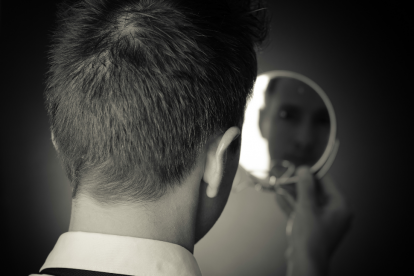
Bipolar Disorders
Each year, approximately six million Americans will experience the frightening and disabling symptoms of bipolar disorder. For bipolar sufferers, depressive periods will alternate with manic periods, and unless treatment services are sought that cycle will continue indefinitely. Fortunately, treatment methods for bipolar disorder are highly effective in the vast majority of cases, and anyone who is diagnosed with this life-altering condition should be able to overcome it with time, patience, and an unshakable commitment to healing.
Bipolar Disorder Defined
Bipolar disorder is a chronic mental health condition that sabotages emotional stability. Individuals who suffer from bipolar disorder experience disturbing and disruptive mood swings, shifting back and forth between periods of depression and mania. Bipolar cycles may include brief or extended interludes of normalcy, but at some point the symptoms of bipolar disorder will return, if nothing is done to prevent them.
Depending on the severity of the illness, these depressive and manic states can be highly disabling and may precipitate medical emergencies. Bipolar depression tends to manifest more frequently than mania in most people, and some people experience mixed episodes where symptoms of depression and mania appear simultaneously.
If individuals suffering do not get bipolar disorder treatment, their conditions can get significantly worse over time. Fortunately, this disorder is highly responsive to treatment, and the long-term prognosis for people diagnosed with bipolar is excellent—assuming they seek help before it is too late.
Bipolar Disorder Statistics
The numbers on bipolar disorder tell a tale of hardship and struggle, and the circumstances are especially daunting for those who don’t get diagnosed and don’t receive treatment.
Here are some eye-opening statistics:
- Six million American adults (2.6 percent of the population) will suffer the symptoms of bipolar disorder in any given year.
- 83 percent of those six million people will experience severe bipolar symptoms.
- The lifetime incidence for bipolar disorder among all American adults is 3.9 percent.
- Among individuals in the 18-29 age group, the lifetime incidence for bipolar disorder is 5.9 percent, which indicates that rates of diagnosis are rising.
- The median age of onset for bipolar disorder is 25.
- According to the World Health Organization, bipolar disorder is the sixth leading cause of disability in the world.
- More than two-thirds of people diagnosed with bipolar disorder have a close relative (parent, sibling, child) who share their diagnosis.
- In any given year, approximately one percent of adolescents between the ages of 14 and 18 will meet the criteria for a bipolar diagnosis.
- About one-third of adolescents diagnosed with major depression are actually experiencing the onset of bipolar disorder.
- 20 percent of bipolar disorder sufferers will commit suicide.
Any health condition that has a 20 percent mortality rate should be considered a public health priority, and this statistic highlights how important it is for individuals to seek treatment for bipolar as soon as their symptoms appear.
Signs and Symptoms of Bipolar Disorder
The depressive and manic states associated with bipolar disorder occupy opposite ends of the emotional spectrum, and the symptoms of each are singular and distinctive.
Bipolar Depression
Most people diagnosed with bipolar disorder experience more frequent episodes of depression, and those depressive states tend to last longer than periods of mania.
The most prominent symptoms of bipolar depression include:
- Chronic loss of motivation
- Feelings of emptiness and boredom
- Muted emotional responses to formerly pleasurable activities
- Generalized anxiety
- Constant feelings of guilt, shame, and inadequacy
- Loss of ability to start and/or finish tasks
- Inability to focus and concentrate
- Dramatic changes in sleeping habits
- Poor dietary habits
- Lack of energy for exercise or other physical activity
- Social isolation, reclusiveness
- Suicidal threats or actions
Bipolar Mania
Bipolar manic states are marked by excessive feelings of euphoria, energy, and exuberance. These symptoms do mimic positive emotional states, but eventually they can take on a life of their own, running out of control to the point where hospitalization may be required.
The characteristic symptoms of bipolar mania include:
- Spontaneous and intense feelings of joy and euphoria that don’t fade
- Restlessness and agitation
- Constant nervousness and anxiety
- Rapid thought and speech
- Irritability and extreme emotional sensitivity
- Lack of concentration and focus
- Inability to slow down or relax
- Chronic insomnia
- Egomania and delusions of grandeur
- No concern over consequences of words or actions
- Impulsive and often dangerous behavior
Some bipolar disorder sufferers experience mixed episodes, where the symptoms of mania and depression manifest at the same time. These developments are a testament to the volatility of bipolar disorder, which puts sufferers on an emotional roller coaster with seemingly endless twists and turns.
Types of Bipolar Disorder
The Difference Between Bipolar Type I and Bipolar Type IIWithin the spectrum of bipolar disorder symptoms, mental health professionals have identified five bipolar subtypes:
- Bipolar Disorder I: Bipolar I is the most severe form of the disorder, producing strong and pervasive symptoms of both depression and mania. For bipolar I to be diagnosed, a person must experience a manic episode of one week or longer serious enough to require medical intervention.
- Bipolar Disorder II: With bipolar II the symptoms of depression are experienced at full intensity, but the mania appears in a more muted form known as hypomania. The symptomatic profile of hypomania is similar to mania, but hypomanic symptoms are less impactful and usually not incapacitating.
- Bipolar Disorder, Not Otherwise Specified: People with this variety of bipolar generally experience the typical symptoms of bipolar depression and mania. But these symptoms manifest in random, unpredictable patterns and may vary in intensity and duration.
- Rapid Cycling Bipolar Disorder: Periods of mania and depression recur in a cyclical pattern, but episodes are short in duration in comparison to other forms of bipolar disorder. An individual must experience at least two complete depression/mania cycles in a one-year period to be diagnosed with rapid cycling bipolar disorder.
- Cyclothymic Disorder: This less intense, less disabling version of bipolar disorder produces mild states of depression that alternate with periods of hypomania. To receive a diagnosis for cyclothymic disorder, also known as cyclothymia, a person must have experienced alternating periods of mild depression and hypomania for two years or longer.
Bipolar Disorder Risk Factors
Mental health professionals have identified three significant risk factors for bipolar disorder:
Genetics. According to various studies, children who have one parent diagnosed with bipolar disorder have a 15-30 percent chance of developing the condition, while kids with two bipolar parents have a 50- to 75-percent risk.
Environment. People exposed to physical, psychological, and emotional trauma of various types are at increased risk for bipolar disorder, regardless of when these shocks were experienced. About three-fifths of bipolar sufferers will battle substance problems, and their misuse of substances may play some role in the development or intensification of their bipolar symptoms, requiring specialized treatment.
Brain structure and function. Scans of the brains of bipolar disorder sufferers show neurological abnormalities in areas responsible for the regulation of emotions, inhibitions, and motivation, along with an unusual loss of brain matter overall.
The actual causes of bipolar disorder are difficult to trace, but likely emerge from some combination of the above three risk factors.
Diagnosing Bipolar Disorder
There is no physical test for bipolar disorder. Instead, clinicians must collect extensive information about a person’s medical history, including reports of any and all mental and behavioral health symptoms they may have experienced.
Unfortunately, up to 70 percent of bipolar sufferers will be misdiagnosed initially, usually with major depression since that is the condition that recreates bipolar depressive states. If manic symptoms are observed in isolation it can lead to a misdiagnosis of PTSD, ADHD, or an anxiety disorder.
Despite the complications and uncertainties, individuals with bipolar disorder can dramatically reduce their risk of misdiagnosis by making a concerted effort to report all of their symptoms to their doctors, no matter how infrequently they occur or how mild they normally seem. Ideally, the person making the diagnosis will be a mental health professional with extensive exposure to bipolar disorder in all of its manifestations.
7 in 10 Bipolar Cases are Misdiagnosed
Proper Diagnosis is Essential for Effective Treatment
Long-Term Prognosis
Various studies have been performed analyzing the effectiveness of treatment for bipolar disorder, and all confirm that recovery is very likely for bipolar sufferers who are diligent in their approach to healing.
Treatment for bipolar symptoms will usually begin in a residential mental health treatment facility, where 24-hour support and assistance are available and the patient can concentrate completely on overcoming their mental health challenges. After residential treatment for bipolar is complete, outpatient programs and/or aftercare regimens will be organized to make sure the patient remains committed to their recovery.
Whether administered on an inpatient or outpatient basis, a carefully coordinated recovery regimen for bipolar disorder will normally include:
- Psychotherapy. Individual, group, and family therapy will all be included in each patient’s treatment program. The types of therapy usually offered for bipolar disorder include cognitive behavioral therapy (CBT), individual and group psychoeducation, family-focused therapy (FFT), interpersonal and social rhythm therapy (IPSRT), and eye movement desensitization and reprocessing (EMDR).
- Medication. A combination of mood stabilizers and antidepressants will usually be administered. Antidepressants must be used with caution, however, since they can provoke manic episodes in some bipolar sufferers.
- Training in life skills and symptom management. Coping strategies for bipolar symptoms are introduced, and topics related to life management are discussed in a solution-oriented context.
- Holistic healing techniques. Many bipolar sufferers enjoy improved emotional stability after adding meditation, massage therapy, acupuncture, biofeedback, yoga, and other mind-body healing methods to their treatment regimens.
- Special therapies for co-occurring disorders. Co-occurring mental and behavioral health conditions like ADHD, post-traumatic stress disorder (PTSD), anxiety disorders, eating disorders, and other mental health disorders are common among bipolar sufferers, and when such disorders are present treatment programs must be tailored to address all mental health symptoms with equal emphasis.
There is no cure for bipolar disorder. But with active participation in well-planned recovery programs, bipolar sufferers can live symptom-free for extended periods of time. If they suffer relapses, they can quickly get back on track with the help of their therapists, family members, friends, and peers they interact with in mental health support groups.
Evidence-based bipolar disorder recovery plans have helped millions of people regain their personal autonomy and emotional balance, and that is a repeatable result for anyone who seeks treatment and dedicates themselves to healing.
Why Consider Bridges to Recovery for Bipolar Disorder?
Bridges to Recovery is a residential treatment center for bipolar disorder and other complex mental health and emotional issues. We provide compassionate and effective care in a serene residential setting so clients can focus on their treatment and recovery without the worries of external pressures and stressors.
- Private residential accommodations. Our exclusive residential treatment homes have a maximum of six clients, providing a safe, private alternative to a more traditional hospital environment.
- World-class clinical staff. Our expert clinical team provides individual therapy using proven evidence-based treatment modalities to treat bipolar disorder.
- Individualized treatment plans. After a thorough assessment, we create a truly individualized treatment plan that offers profound healing and strategies for overcoming the toughest obstacles.
- Health and wellness focused. To ensure your comfort during your healing process, our chefs create delicious healthy, gourmet meals. We also offer yoga, meditation, acupuncture, massage, and physical fitness classes.
At Bridges to Recovery, we believe that exceptional psychiatric, clinical, and holistic care can transform lives. With the utmost dignity and respect, we meet you where you are to develop a vision for the life you wish to have, and offer the care you need to achieve it.





